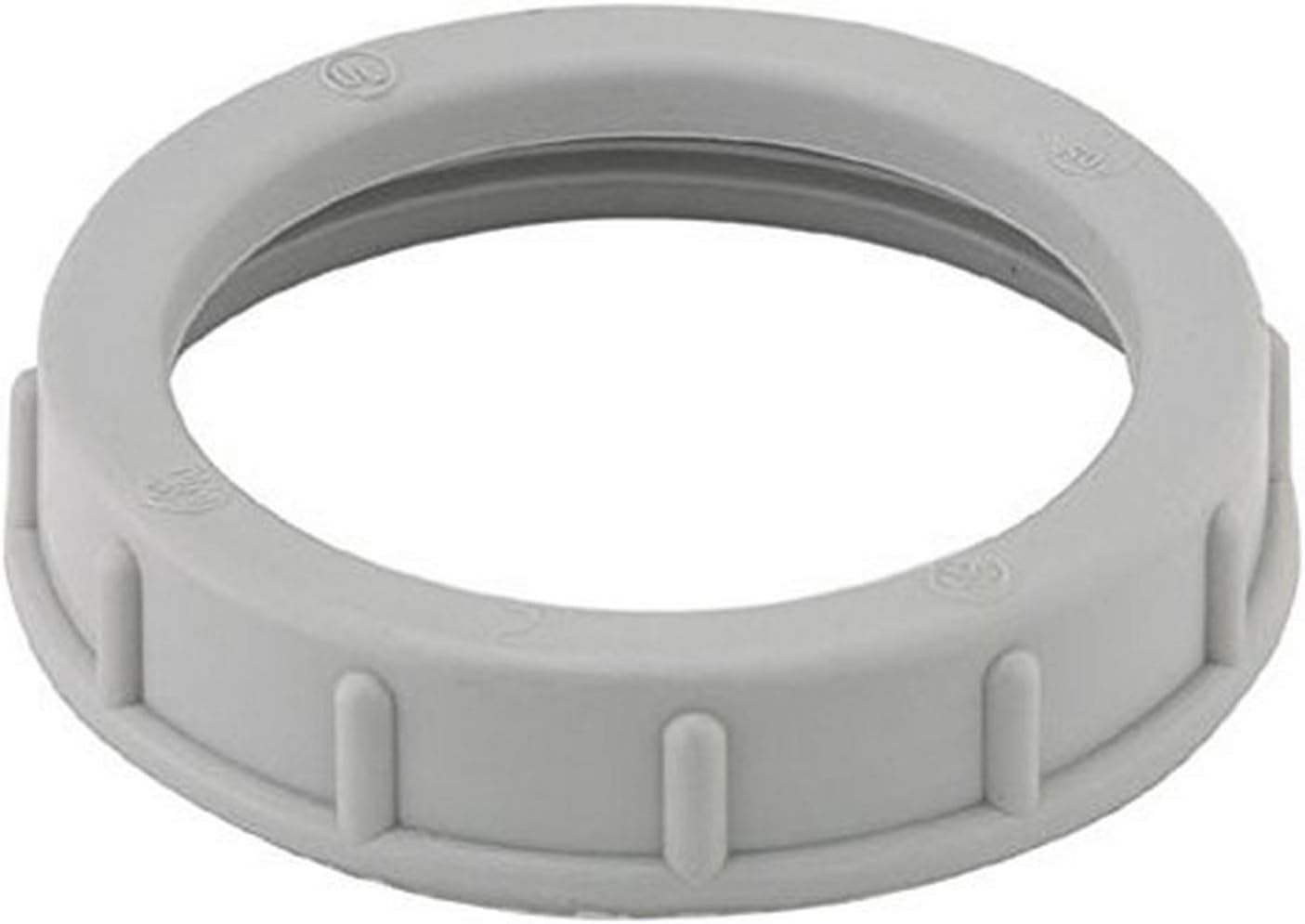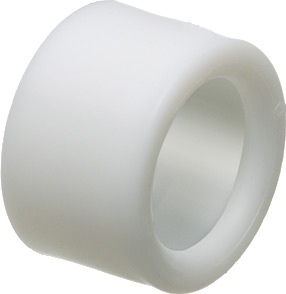
Are there specific guidelines for recycling or disposing of nylon bushings at the end of their life cycle?
Yes, there are specific guidelines for recycling or disposing of nylon bushings at the end of their life cycle. Here are some considerations:
1. Recycling:
– Nylon bushings, being made of a thermoplastic material, are generally recyclable. However, the specific recycling guidelines may vary depending on the composition of the nylon and the recycling facilities available in your area.
– Check with local recycling centers or waste management authorities to determine if they accept nylon bushings for recycling. They can provide information on the collection methods, sorting requirements, and any specific instructions for preparing the bushings for recycling.
– It’s important to separate nylon bushings from other materials and ensure they are clean and free of contaminants before recycling. Removing any metal inserts or other components attached to the bushings can facilitate the recycling process.
2. Specialty Recycling Programs:
– In some cases, there may be specialty recycling programs or initiatives specifically designed for industrial components like nylon bushings. These programs focus on recycling materials that are commonly used in industrial applications and may offer specialized recycling processes.
– Research and inquire about any such programs available in your region or industry. These programs may have specific collection points or partnerships with recycling facilities that can handle nylon bushings effectively.
3. Manufacturer Take-Back Programs:
– Some manufacturers or suppliers of nylon bushings may have take-back programs in place. These programs allow customers to return their used bushings to the manufacturer or supplier for proper recycling or disposal.
– Contact the manufacturer or supplier of the nylon bushings and inquire about any take-back programs they offer. They can provide guidance on the process, collection points, or specific instructions for returning the bushings.
4. Local Regulations and Guidelines:
– Be aware of any local regulations or guidelines regarding the disposal of nylon bushings. Different regions may have specific requirements or restrictions on the disposal methods for certain types of materials.
– Check with local environmental agencies or waste management authorities to understand the regulations in your area. They can provide information on proper disposal methods, landfill restrictions, or any hazardous waste classification that may apply to nylon bushings.
5. Reuse or Repurpose:
– Instead of recycling or disposing of nylon bushings, consider exploring opportunities for reuse or repurposing. Depending on their condition and functionality, nylon bushings can potentially be used in other applications or donated to organizations that can utilize them.
– Connect with local community organizations, educational institutions, or makerspaces that may have a need for industrial components like nylon bushings. They may accept donations or provide guidance on how to repurpose the bushings effectively.
It’s important to follow the guidelines and regulations in your specific region when recycling or disposing of nylon bushings. By doing so, you can ensure proper waste management, minimize environmental impact, and contribute to sustainability efforts.

Where can I purchase self-lubricating nylon bushings for reduced maintenance needs?
If you are looking to purchase self-lubricating nylon bushings that offer reduced maintenance needs, here’s a detailed explanation:
1. Online Industrial Suppliers:
– One convenient option is to search for online industrial suppliers that specialize in bearings, bushings, and related products. These suppliers often have a wide range of self-lubricating nylon bushings available for purchase.
– Use search engines and online marketplaces to find reputable industrial suppliers. Some popular online platforms include Alibaba, Amazon, Grainger, McMaster-Carr, and RS Components.
– Visit their websites and use their search or navigation tools to locate the section dedicated to bushings or bearings. Filter or search specifically for self-lubricating nylon bushings to narrow down your options.
– Compare product specifications, prices, and customer reviews to make an informed decision. Pay attention to the self-lubricating properties and maintenance benefits mentioned in the product descriptions.
2. Local Industrial Suppliers:
– Check your local area for industrial suppliers or distributors that carry a variety of mechanical components. These suppliers often cater to businesses and individuals in need of industrial products, including self-lubricating nylon bushings.
– Look up directories or online listings of industrial suppliers in your region. Visit their physical stores or contact them to inquire about the availability of self-lubricating nylon bushings.
– Discuss your specific requirements with the suppliers and inquire about the brands or product lines they carry that offer reduced maintenance needs. They can provide guidance and recommendations based on their expertise.
3. Manufacturers and Authorized Dealers:
– Consider reaching out to manufacturers of self-lubricating nylon bushings or their authorized dealers. Manufacturers often have a network of authorized distributors or dealers who can provide their products directly to customers.
– Visit the websites of the manufacturers or use their “Find a Dealer” or “Contact Us” features to locate authorized dealers near your location. Contact them to inquire about the availability of self-lubricating nylon bushings.
– Manufacturers or authorized dealers can provide information on the specific benefits and reduced maintenance features of their self-lubricating nylon bushings. They may also offer technical support and guidance in selecting the right product for your application.
4. Trade Shows and Exhibitions:
– Attend trade shows, exhibitions, or industry conferences related to mechanical components, bearings, or industrial supplies. These events often feature numerous exhibitors showcasing their products, including self-lubricating nylon bushings.
– Check event listings or industry publications to find upcoming trade shows in your area or within your industry of interest. Attend these events to explore the offerings of different suppliers and manufacturers.
– Engage in conversations with representatives from various companies, inquire about their self-lubricating nylon bushings, and collect product information or brochures for further evaluation.
5. Local Machine Shops or Fabricators:
– Local machine shops or fabricators may also be a source for self-lubricating nylon bushings. These establishments often have access to a variety of materials and can manufacture or source bushings based on your specifications.
– Search for machine shops or fabricators in your area and contact them to inquire if they offer self-lubricating nylon bushings or can source them for you. Provide them with the specific requirements and quantities you need.
– Discuss the reduced maintenance benefits you are looking for, and they can advise on the most suitable self-lubricating nylon bushings for your application.
Remember to consider factors such as product quality, pricing, delivery options, and customer support when selecting a supplier. It is also beneficial to compare multiple options before making a final decision to ensure you find the most suitable self-lubricating nylon bushings for your reduced maintenance needs.

Are there different types of nylon materials used in manufacturing nylon bushings, and how do they impact performance?
Yes, there are different types of nylon materials used in manufacturing nylon bushings, and they can have varying impacts on performance. Here’s a detailed explanation:
1. Nylon 6:
– Nylon 6, also known as polyamide 6 (PA6), is a common type of nylon material used in manufacturing bushings. It offers good mechanical strength, toughness, and wear resistance.
– Nylon 6 bushings provide reliable performance in various applications, particularly those with moderate loads and operating conditions. They are cost-effective and widely available.
2. Nylon 66:
– Nylon 66, or polyamide 66 (PA66), is another popular nylon material used for bushing manufacturing. It has similar properties to Nylon 6 but with enhanced strength, stiffness, and heat resistance.
– Nylon 66 bushings exhibit improved dimensional stability and resistance to deformation under load, making them suitable for applications with higher loads or more demanding operating conditions.
3. Heat-Stabilized Nylon:
– Heat-stabilized nylon materials, such as Nylon 6/6 or PA66 with added heat stabilizers, are specifically formulated to provide increased resistance to elevated temperatures.
– These heat-stabilized nylon bushings can withstand higher temperature ranges without significant loss of mechanical properties or dimensional stability. They are suitable for applications where thermal resistance is a critical requirement.
4. Glass-Filled Nylon:
– Glass-filled nylon, also referred to as reinforced nylon, is a type of nylon material that is reinforced with glass fibers. The addition of glass fibers improves the strength, stiffness, and dimensional stability of the nylon.
– Glass-filled nylon bushings offer enhanced load-bearing capabilities, improved wear resistance, and reduced creep under heavy loads. They are commonly used in applications that require higher strength and rigidity.
5. Molybdenum Disulfide (MoS2) Filled Nylon:
– MoS2 is a solid lubricant that can be added to nylon materials to enhance their self-lubricating properties. Nylon bushings with MoS2 fillers provide improved friction and wear characteristics.
– MoS2-filled nylon bushings are suitable for applications where additional lubrication may be limited or impractical. They help reduce friction, minimize wear, and extend the lifespan of the bushing and mating parts.
6. Other Specialty Nylon Materials:
– There are various other specialty nylon materials available for specific applications. For example, nylon materials with enhanced chemical resistance, electrical conductivity, or low friction properties can be used in specialized bushing applications.
– These specialty nylon bushings cater to specific performance requirements and can be selected based on the unique needs of the application.
The choice of nylon material for manufacturing bushings depends on the specific application requirements, including load capacity, operating temperature, wear resistance, dimensional stability, and cost considerations. It is important to select the appropriate nylon material that can meet the performance demands of the application and ensure optimal functionality and durability of the bushings.


editor by CX 2024-04-23